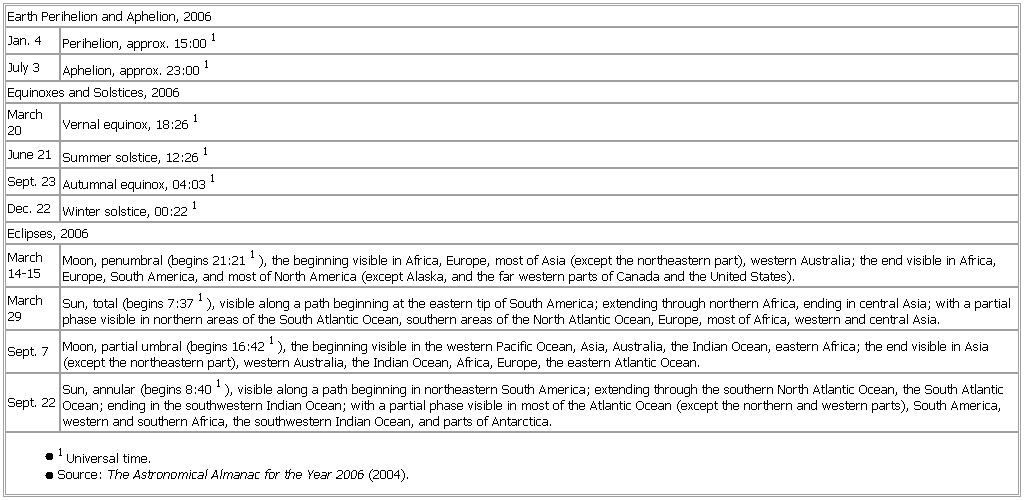- Earth Perihelion and Aphelion, 2006
-
▪ TableEarth Perihelion and Aphelion, 2006Jan. 4 Perihelion, approx. 15:001July 3 Aphelion, approx. 23:001Equinoxes and Solstices, 2006March 20 Vernal equinox, 18:261June 21 Summer solstice, 12:261Sept. 23 Autumnal equinox, 04:031Dec. 22 Winter solstice, 00:221Eclipses, 2006March 14-15 Moon, penumbral (begins 21:211), the beginning visible in Africa, Europe, most of Asia (except the northeastern part), western Australia; the end visible in Africa, Europe, South America, and most of North America (except Alaska, and the far western parts of Canada and the United States).March 29 Sun, total (begins 7:371), visible along a path beginning at the eastern tip of South America; extending through northern Africa, ending in central Asia; with a partial phase visible in northern areas of the South Atlantic Ocean, southern areas of the North Atlantic Ocean, Europe, most of Africa, western and central Asia.Sept. 7 Moon, partial umbral (begins 16:421), the beginning visible in the western Pacific Ocean, Asia, Australia, the Indian Ocean, eastern Africa; the end visible in Asia (except the northeastern part), western Australia, the Indian Ocean, Africa, Europe, the eastern Atlantic Ocean.Sept. 22 Sun, annular (begins 8:401), visible along a path beginning in northeastern South America; extending through the southern North Atlantic Ocean, the South Atlantic Ocean; ending in the southwestern Indian Ocean; with a partial phase visible in most of the Atlantic Ocean (except the northern and western parts), South America, western and southern Africa, the southwestern Indian Ocean, and parts of Antarctica.● 1Universal time.● Source: The Astronomical Almanac for the Year 2006 (2004).See as table:

* * *
Universalium. 2010.
